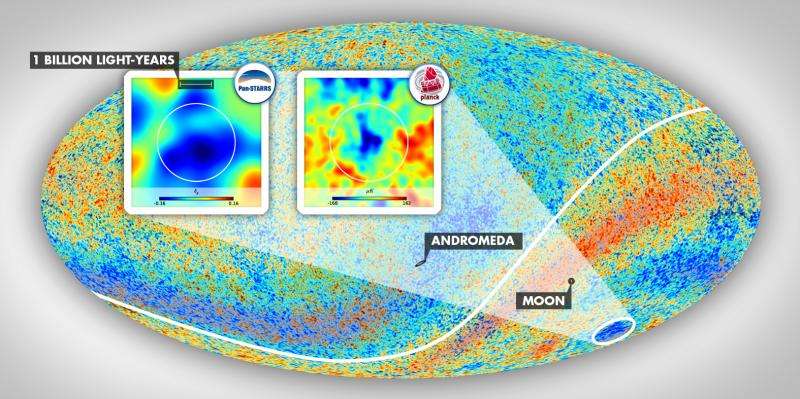April 27, 2015 report
Best of Last Week–Variance of gravitational constant, 50 years of Moore's Law and creating the sensation of invisibility

It was an interesting week in physics as researchers delved into the question of why the measurements of the gravitational constant vary so much. The latest theory suggests that it is not likely attributable to systematic errors, but to "something else." Also researchers at the University of Rochester found a way to generate broadband terahertz radiation from a microplasma in the air—they report that they exploited the underlying physics to lower the laser power necessary for plasma generation.
In space news, a team working in Hawaii found that the largest known structure in the universe leaves its imprint on CMB radiation—a massive cold spot indicates that something really large and mysterious is blocking the signature. Also, NASA gave an update on the progress of the James Webb Telescope—the most powerful space telescope ever—that is scheduled for launch in 2018. And researchers at the University of Maryland reported that a pulsing light may indicate a supermassive black hole merger—the result of two galaxies merging.
In other news, researchers at the University of Tokyo have developed a new kind of electronic paper that could make inexpensive electronic displays—they describe it as revamped technology that could allow for the creation of inexpensive, whiteboard-sized displays. Also, scientists around the world have been considering the advancements in computer technology as Silicon Valley marks 50 years of Moore's Law—first described back in 1965, it has served as both a prophecy and as a driver, pushing researchers to work toward the development of ever smaller, more complex and powerful computers. Also, a team of bio-researchers found a way to turn pancreatic cancer cells into normal cells—a breakthrough for treating one of the deadliest forms of cancer. And researchers with the University of Utah found a deep reservoir of Yellowstone magma, which they note is big enough to fill the Grand Canyon over eleven times.
And finally, for those who have had fantasies of somehow making themselves disappear, a team of neuroscientists at Sweden's Karolinska Institutet has developed a way to create the sensation of invisibility—and while it may not fulfill the ultimate fantasy, it does appear to offer a means of experiencing what it would be like.
© 2015 Phys.org





















